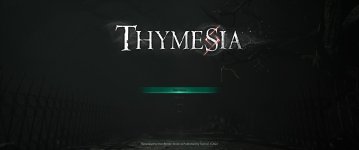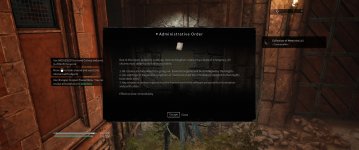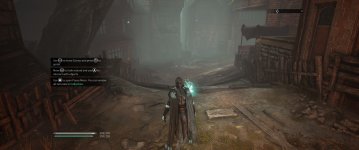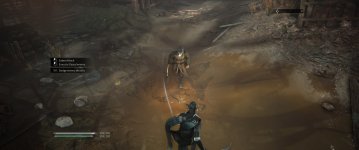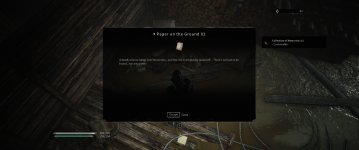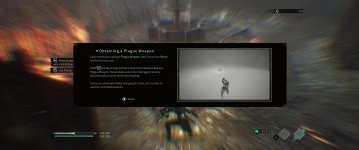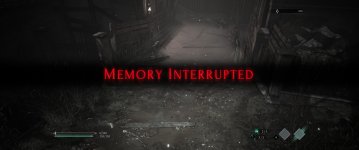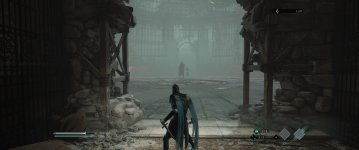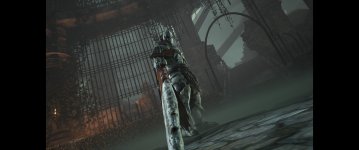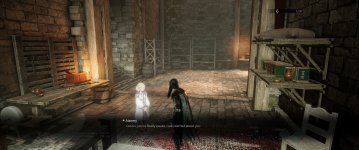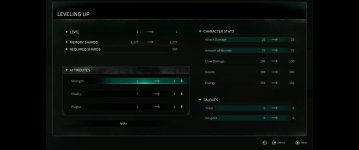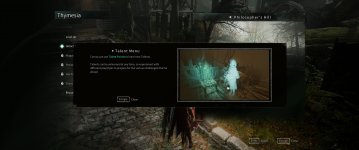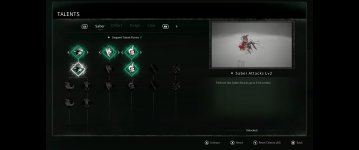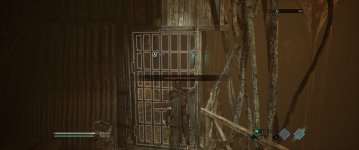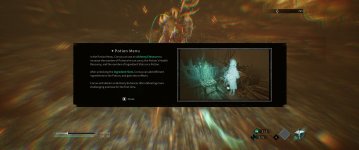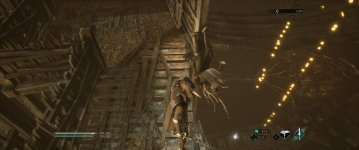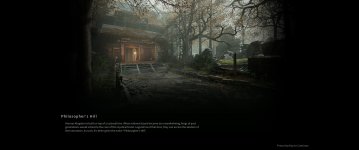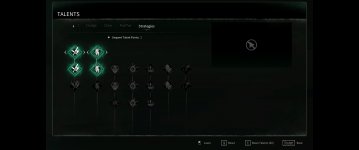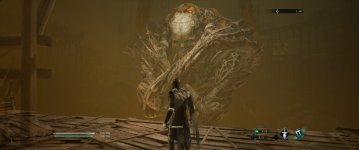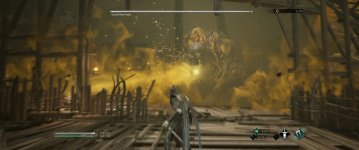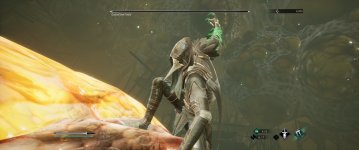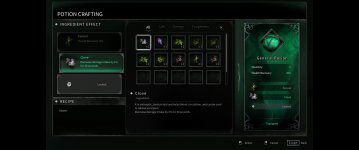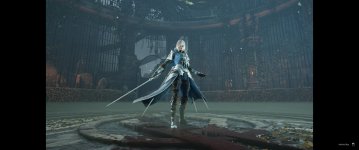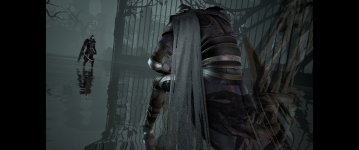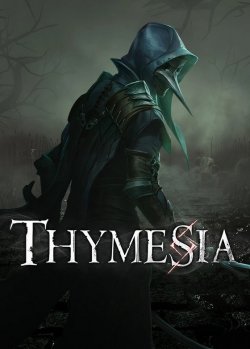 Thymesia (Computer)
Thymesia (Computer)
Official GBAtemp Review
Product Information:
- Release Date (NA): August 18, 2022
- Publisher: Team 17
- Developer: OverBorder Studio
- Genres: Action, Soulslike
- Also For: PlayStation 4, PlayStation 5, Xbox One, Xbox Series X|S
Game Features:
The Bloodborne at Home:
When it comes to Soulslikes, you don’t really get a lot of Bloodborne or Sekiro clones; most developers tend to focus more on the Demon’s/Dark Souls gameplay style and usually ignore Sekiro and Bloodborne. But not today! Overborder Studios decided that with Thymesia, the quicker playstyle of Sekrio/Bloodborne was better suited to their Soulslike, and it’s a breath of fresh air. But is it worth playing? Let’s find out.
Thymesia follows the story of Corvus, a plague doctor-esque figure whose main goal is to cure the kingdom of Hermes of a terrible curse caused by alchemy and…vile blood. ( ͡° ͜ʖ ͡°) The game starts off in the middle of a village ruined and destroyed due to the terrible plague sweeping the nation. As you make your way through the village you’ll get your first taste of gameplay for Thymesia.
Unlike most Soulsborne clones, thankfully, Thymesia at least tries to do some things differently here which I much appreciate. Instead of the usual light and heavy attacks, you’ve got five main ways to damage your opponents: normal attacks, “claw” attacks, feather attacks, plague weapon attacks, and deflects. Normal attacks are self explanatory, attacking enemies with your saber and dagger (which is the only “main” weapon available to you). This damages enemies and lowers their health.
But it’s not quite as simple as that, however, as enemy health bars have two sets of health: the white “HP” bar and a green “Wound” bar. The Wound acts more like an enemy's main HP as opposed to the white bar, as if you don’t do enough wound damage to the enemy it will regenerate its health back to whatever level the green bar is at. And how do you deal that damage? Via claw attacks, of course!...which are, for the most part, mostly useless for doing HP damage, so you’ll have to combo the two attack styles to defeat foes.
It’s an interesting idea in theory, but terrible in practice, and seems it was mostly put into place to force you to play the game a specific way as opposed to the freedom you get with Soulsborne games. On the smaller enemies this isn’t too bad, given how little damage they take to kill, but with bosses and “black-knight”-esque mobs later on this tactic becomes more tedious than anything, lengthening encounters that would otherwise take no time at all.
Then you have Plague weapons, which are one of the neater additions to the game. These weapons are gained from the various enemies in the game; once killed, they have a chance of dropping a “stone” that is used to unlock and upgrade these weapons, which can then be activated as a special attack using your Energy bar. You can also “extract” plague weapons using a charged claw attack, which gives you a one time use of whatever weapon that enemy is currently using, which is a nice way to test out each weapon without having to grind for stones.
There are also the feather attacks and deflection mechanics, which basically serve as the game’s parry mechanics. Feather attacks allows Corvus to cancel specific attacks from a distance, but only works on specific attacks denoted by a green flash before the enemy attack. You have a limited number of feathers to throw, and the timing for this is pretty much “you miss by microseconds and you lose” which is just not that fun. As for the deflection mechanic, it is geared for close-range parrying of normal attacks. Damage is done via deflecting the attack itself, instead of with a riposte system which is good…but the timing on this one is also way too precise to be useful. It also doesn’t even interrupt combos, which I initially wasn’t a fan of.
It’s not until later in the game that deflections will truly become useful, and this is thanks to the small talent tree in place. Talent points are given via leveling, which is done via “Memory Shards” that are obtained from killing enemies. Once you have enough shards, you can choose between three main stats to level: Strength, which increases damage. Vitality, which increases health and energy, and plague which levels your claw damage.
After leveling up, you then receive talent points which can then be used to unlock various upgrades for your skills in the following categories: Saber, Deflect, Dodge, Claw, and Strategies. Beyond simple talents like increasing damage or the number of feathers you have, the most useful comes from the Deflect category, specifically the two talents that give you increased parry frames but with lower deflect damage. This turns the parrying system into an actually useful option for dealing damage, while also protecting you from damage.
And it’s at this point that the game becomes…well, trivial. Thankfully you can actually unlearn talents at any point in time, effectively choosing how difficult or easy you want the game to be which I was quite surprised and happy to see. The most disappointing thing though is you’re limited to how many talent points you can have, which is just 24 points. Any leveling after this and you only get points for your main stats and that’s it. I found this fairly limiting, forcing me to unlearn and learn talents to try out new things as opposed to just unlocking them as I level.
With combat out of the way, we can move along into the setting and story of the game. Honestly, there’s not much to it; the Kingdom of Hermes is suffering from a plague due to alchemy, it caused people to go crazy, and you play as an amnesiac assassin who looks like a plague doctor named Corvus who is looking for a way to cure that plague. You fight various plague victims, scavengers, and monsters spawned by alchemy and the plague, and honestly that’s about all there is to it.
The overall design of the world has a fairly gothic/Lovecraftian aesthetic, which makes it fairly clear that Bloodborne was definitely the inspiration for this game. Listening to the OST you’ll get that same sense, only further cementing the idea. One thing that was weird, however, was that there was no voice acting whatsoever in the game. I’m unsure if this is because I was playing a weeks-early press copy, or if the game is just like this, but it was rather odd having subtitles during cutscenes for bosses but getting no actual speech. But again, this may be my press copy and not a real issue.
There are three main areas to the game, the Sea of Trees, The Royal Garden, and the Hermes Fortress, each designed around different themes. The first is a creep mushroom carnival area, the second is a royal garden with an underground library, and the third is a castle-like area set in a tree-filled area. Each area has its own set of missions, the initial runthrough of the area being the main mission with a boss encounter at the end, and then sub-missions that take you through different sections of those areas with various objectives. Some may require specific pages of a journal, others can task you to simply clear out the area of enemies; but for the most part you’re only moving through a smaller section of the main area.
Lore-wise, a lot of the lore of the game comes from random journal entries that are scattered throughout each level, giving you small snippets of information about the kingdom and how the plague has been dealt with and handled. Avoiding spoilers, I will say that unlike Soulsborne games where this lore is just “extra information for lore nerds”, you will find that certain passages of these random journals are actually quite important, and it’s really important for you to pay attention to what they say.
The end of the game requires you to choose between various ingredients in an attempt to make a cure for the plague, and it appears like each choice has its own separate, unique ending sequence associated with what you choose. I only ended up finishing the game once, which took about 6.5 hours, so I’m unsure how much is changed between each choice, but it is a fairly interesting way to go about things for a Souls-like.
Thymesia | Launch Trailer
Verdict
- The plague weapon system is pretty fun.
- I quite enjoyed the overall setting and scenery.
- Decent attempt at a Bloodborne-like.
- Quite short.
- Story just isn't all there.
- Gameplay feels very limited for a Souls-like, and maybe ok for an action RPG.
